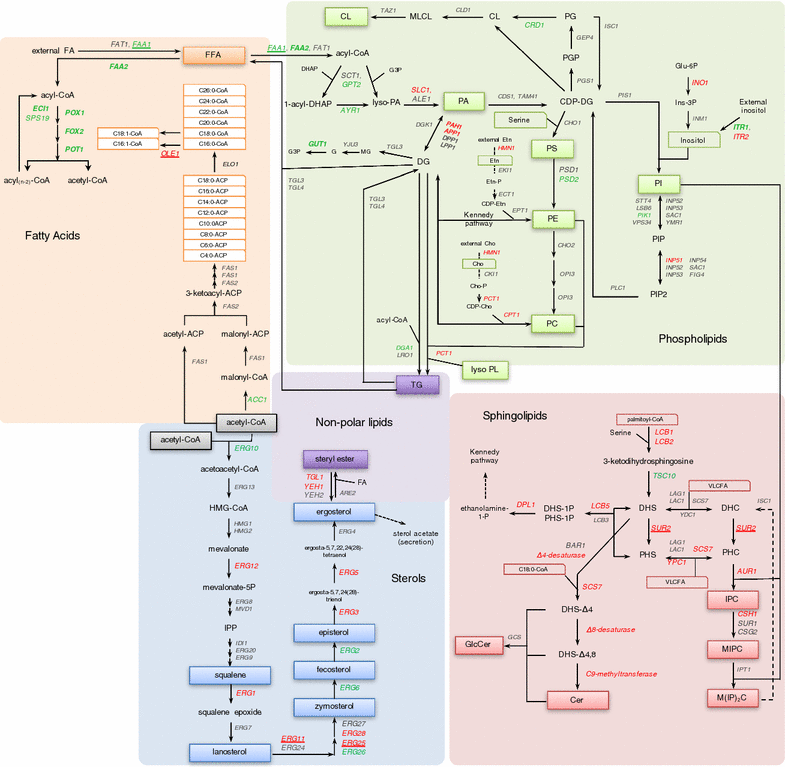The effect of hypoxia on the lipidome of recombinant Pichia pastoris
- PMID: 28526017
- PMCID: PMC5437588
- DOI: 10.1186/s12934-017-0699-4
The effect of hypoxia on the lipidome of recombinant Pichia pastoris
Abstract
Background: Cultivation of recombinant Pichia pastoris (Komagataella sp.) under hypoxic conditions has a strong positive effect on specific productivity when the glycolytic GAP promoter is used for recombinant protein expression, mainly due to upregulation of glycolytic conditions. In addition, transcriptomic analyses of hypoxic P. pastoris pointed out important regulation of lipid metabolism and unfolded protein response (UPR). Notably, UPR that plays a role in the regulation of lipid metabolism, amino acid metabolism and protein secretion, was found to be upregulated under hypoxia.
Results: To improve our understanding of the interplay between lipid metabolism, UPR and protein secretion, the lipidome of a P. pastoris strain producing an antibody fragment was studied under hypoxic conditions. Furthermore, lipid composition analyses were combined with previously available transcriptomic datasets to further understand the impact of hypoxia on lipid metabolism. Chemostat cultures operated under glucose-limiting conditions under normoxic and hypoxic conditions were analyzed in terms of intra/extracellular product distribution and lipid composition. Integrated analysis of lipidome and transcriptome datasets allowed us to demonstrate an important remodeling of the lipid metabolism under limited oxygen availability. Additionally, cells with reduced amounts of ergosterol through fluconazole treatment were also included in the study to observe the impact on protein secretion and its lipid composition.
Conclusions: Our results show that cells adjust their membrane composition in response to oxygen limitation mainly by changing their sterol and sphingolipid composition. Although fluconazole treatment results a different lipidome profile than hypoxia, both conditions result in higher recombinant protein secretion levels.
Keywords: Antibody fragment; Hypoxia; Lipidomics; Pichia pastoris; Protein secretion; Recombinant protein production; Unfolded protein response.
Figures





References
-
- Fickers P. Pichia pastoris: a workhorse for recombinant protein production. Curr Res Microbiol Biotechnol. 2014;2:354–363.
MeSH terms
Substances
LinkOut - more resources
Full Text Sources
Other Literature Sources
Miscellaneous

